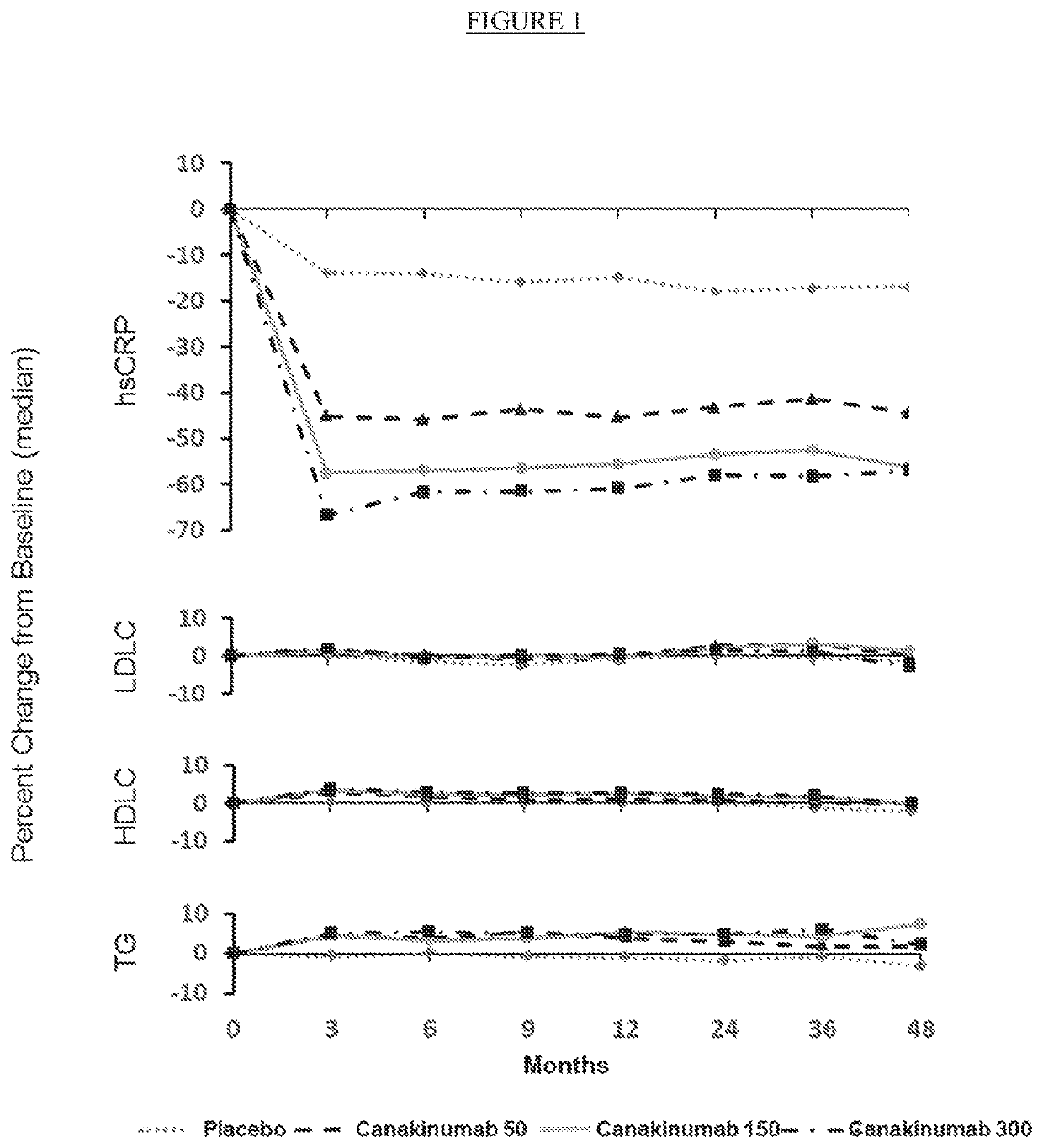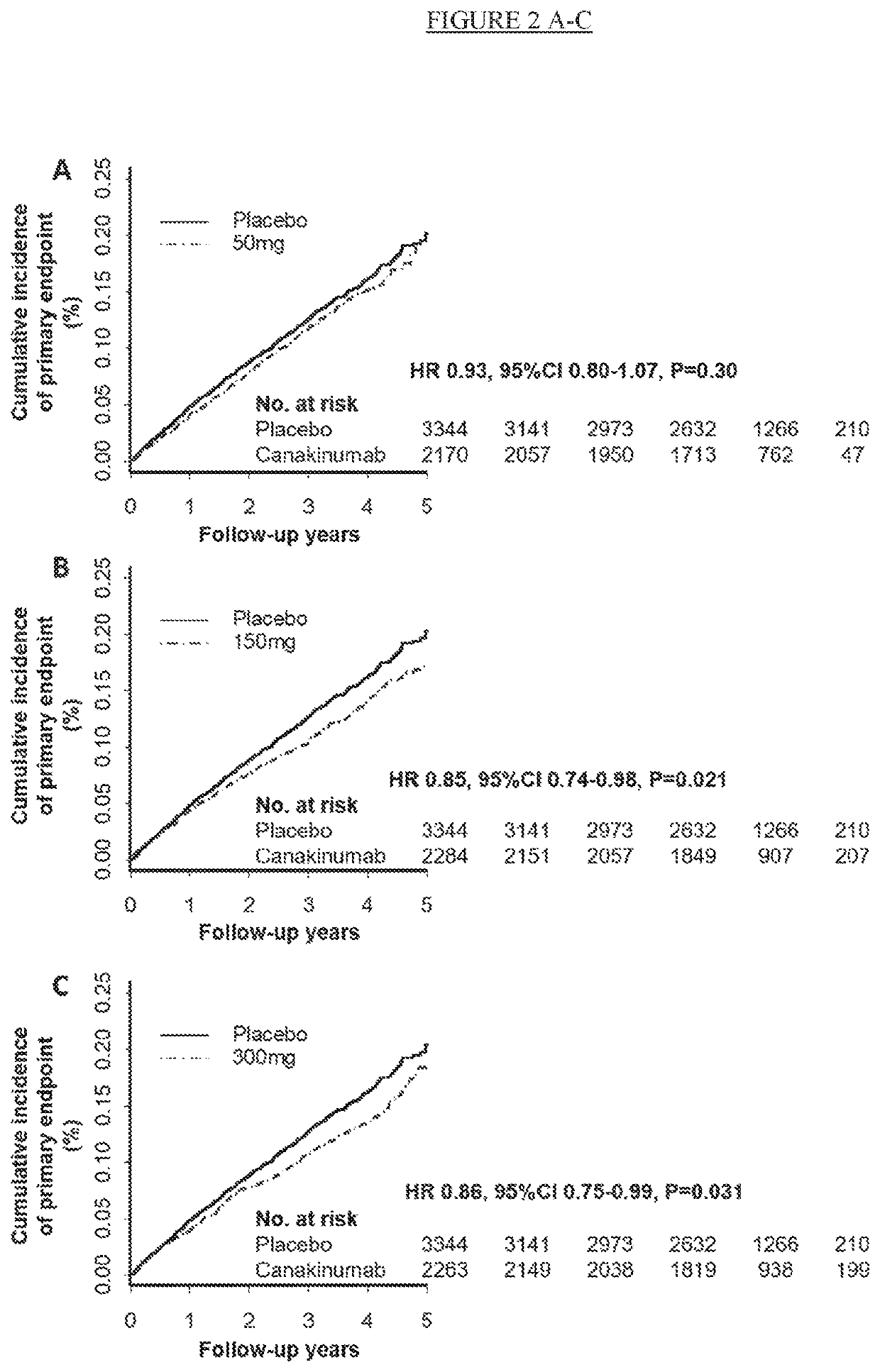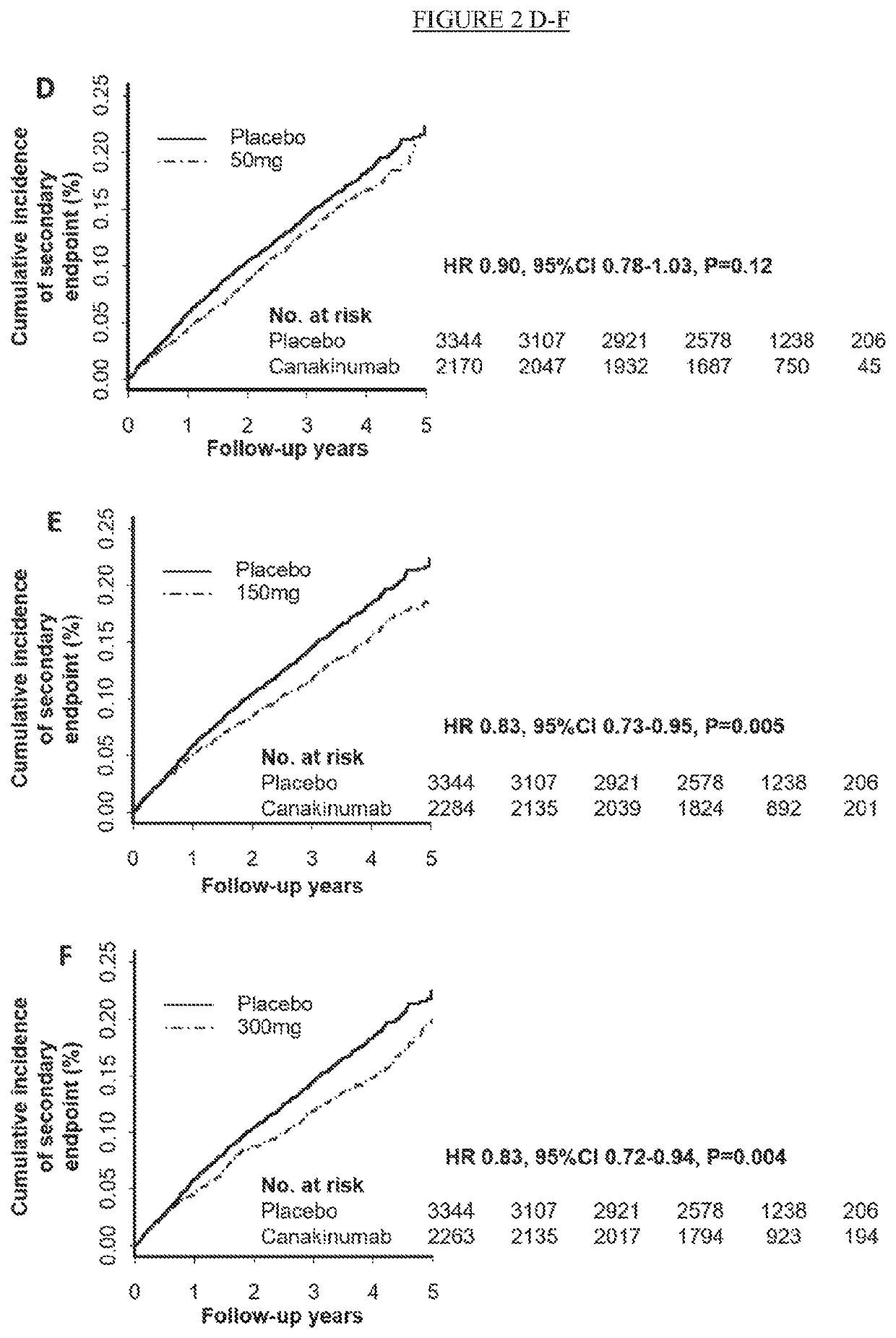Use of canakinumab
a technology of canakinumab and sarcoma, which is applied in the field of use of canakinumab, can solve the problems of increased vascular risk of patients with elevated inflammatory biomarkers such as hscrp and il-6, and achieve the effects of reducing the risk of or preventing recurrence of cardiovascular events
- Summary
- Abstract
- Description
- Claims
- Application Information
AI Technical Summary
Benefits of technology
Problems solved by technology
Method used
Image
Examples
example
[0248]The Example below is set forth to aid in the understanding of the invention but is not intended, and should not be construed, to limit its scope in any way.
A Randomized, Double-Blind, Placebo-Controlled, Event-Driven Trial of Quarterly Subcutaneous Canakinumab in the Prevention of Recurrent Cardiovascular Events Among Stable Post-Myocardial Infarction Patients with Elevated hsCRP.
[0249]This study was designed as a multi-center, randomized, parallel group, placebo-controlled, double-blind, event-driven trial to provide definitive evidence on the effects of canakinumab on cardiovascular adverse events in patients with recent MI and elevated inflammatory burden as evidenced by elevated hsCRP. This study design was the most robust clinical trial design to test the hypothesis that anti-inflammatory treatment with canakinumab reduce major adverse cardiovascular events.
Rationale of Study Design
Trial Population.
[0250]Patients were eligible for enrollment if they had a prior history of...
PUM
| Property | Measurement | Unit |
|---|---|---|
| concentration | aaaaa | aaaaa |
| time period | aaaaa | aaaaa |
| MI | aaaaa | aaaaa |
Abstract
Description
Claims
Application Information
 Login to View More
Login to View More - R&D
- Intellectual Property
- Life Sciences
- Materials
- Tech Scout
- Unparalleled Data Quality
- Higher Quality Content
- 60% Fewer Hallucinations
Browse by: Latest US Patents, China's latest patents, Technical Efficacy Thesaurus, Application Domain, Technology Topic, Popular Technical Reports.
© 2025 PatSnap. All rights reserved.Legal|Privacy policy|Modern Slavery Act Transparency Statement|Sitemap|About US| Contact US: help@patsnap.com



